Antibody data
- Antibody Data
- Antigen structure
- References [1]
- Comments [0]
- Validations
- Immunohistochemistry [4]
- Other assay [2]
Submit
Validation data
Reference
Comment
Report error
- Product number
- PA5-21062 - Provider product page

- Provider
- Invitrogen Antibodies
- Product name
- SYNPO Polyclonal Antibody
- Antibody type
- Polyclonal
- Antigen
- Synthetic peptide
- Description
- A suggested positive control is rat brain tissue lysate. PA5-21062 can be used with blocking peptide PEP-1176.
- Reactivity
- Human, Mouse, Rat
- Host
- Rabbit
- Isotype
- IgG
- Vial size
- 100 μg
- Concentration
- 1 mg/mL
- Storage
- 4°C
Submitted references Quantitative proteomics identifies altered O-GlcNAcylation of structural, synaptic and memory-associated proteins in Alzheimer's disease.
Wang S, Yang F, Petyuk VA, Shukla AK, Monroe ME, Gritsenko MA, Rodland KD, Smith RD, Qian WJ, Gong CX, Liu T
The Journal of pathology 2017 Sep;243(1):78-88
The Journal of pathology 2017 Sep;243(1):78-88
No comments: Submit comment
Supportive validation
- Submitted by
- Invitrogen Antibodies (provider)
- Main image
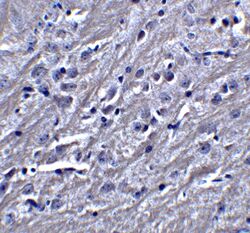
- Experimental details
- Immunohistochemistry of SYNPO in mouse brain tissue with SYNPO Polyclonal Antibody (Product # PA5-21062) at 5 µg/mL.
- Submitted by
- Invitrogen Antibodies (provider)
- Main image
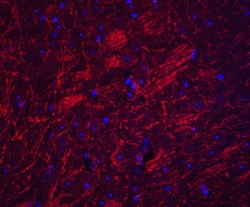
- Experimental details
- Immunofluorescence of SYNPO in mouse brain tissue with SYNPO Polyclonal Antibody (Product # PA5-21062) at 20 µg/mL. Red: SYNPO Blue: DAPI staining
- Submitted by
- Invitrogen Antibodies (provider)
- Main image
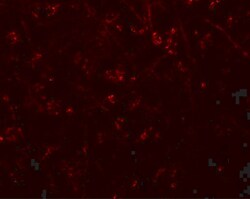
- Experimental details
- Immunofluorescence of SYNPO in human brain tissue with SYNPO Polyclonal Antibody (Product # PA5-21062) at 20 µg/mL.
- Submitted by
- Invitrogen Antibodies (provider)
- Main image
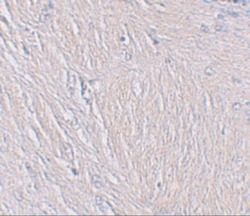
- Experimental details
- Immunohistochemistry of SYNPO in human brain tissue with SYNPO Polyclonal Antibody (Product # PA5-21062) at 2.5 µg/mL.
Supportive validation
- Submitted by
- Invitrogen Antibodies (provider)
- Main image
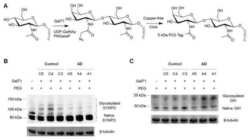
- Experimental details
- NULL
- Submitted by
- Invitrogen Antibodies (provider)
- Main image
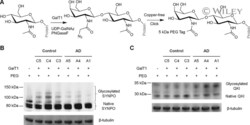
- Experimental details
- Verification of O-GlcNAc quantification with western blotting analysis using lysate of the human brain tissue. (A) PEG labelling of O-GlcNAcylated proteins. First, the O-GlcNAc motif was labelled with GalNAz by GalT1 and UDP-GalNAz, and the N-glycans were removed by PNGase F. Second, the azide group was linked to a 5-kDa PEG tag through copper-free click chemistry. (B and C) The proteins were precipitated and separated by SDS-PAGE, and detected with antibody against SYNPO (B) or antibody against protein quaking (QKI) (C) through western blotting. beta-Tubulin was used as a loading control.
 Explore
Explore Validate
Validate Learn
Learn Western blot
Western blot Immunohistochemistry
Immunohistochemistry